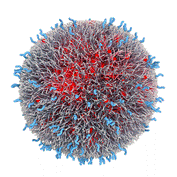Center, Biotechnology

Nebraska Center for Biotechnology: Faculty and Staff Publications
Document Type
Article
Date of this Version
2-10-2019
Citation
Plant Direct. 2019;1–15
Abstract
Sorghum (Sorghum bicolor [L.] Moench) is the fifth most productive cereal crop worldwide with some hybrids having high biomass yield traits making it promising for sustainable, economical biofuel production. To maximize biofuel feedstock yields, a more complete understanding of metabolic responses to low nitrogen (N) will be useful for incorporation in crop improvement efforts. In this study, 10 diverse sorghum entries (including inbreds and hybrids) were field-grown under low and full N conditions and roots were sampled at two time points for metabolomics and 16S amplicon sequencing. Roots of plants grown under low N showed altered metabolic profiles at both sampling dates including metabolites important in N storage and synthesis of aromatic amino acids. Complementary investigation of the rhizosphere microbiome revealed dominance by a single operational taxonomic unit (OTU) in an early sampling that was taxonomically assigned to the genus Pseudomonas. Abundance of this Pseudomonas OTU was significantly greater under low N in July and was decreased dramatically in September. Correlation of Pseudomonas abundance with root metabolites revealed a strong negative association with the defense hormone salicylic acid (SA) under full N but not under low N, suggesting reduced defense response. Roots from plants with N stress also contained reduced phenylalanine, a precursor for SA, providing further evidence for compromised metabolic capacity for defense response under low N conditions. Our findings suggest that interactions between biotic and abiotic stresses may affect metabolic capacity for plant defense and need to be concurrently prioritized as breeding programs become established for biofuels production on marginal soils.


Comments
open access article